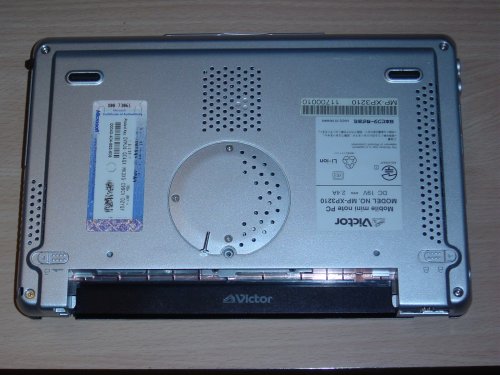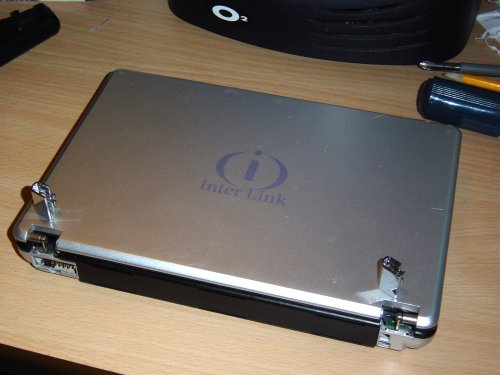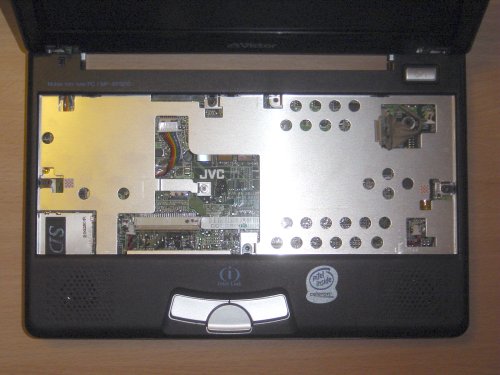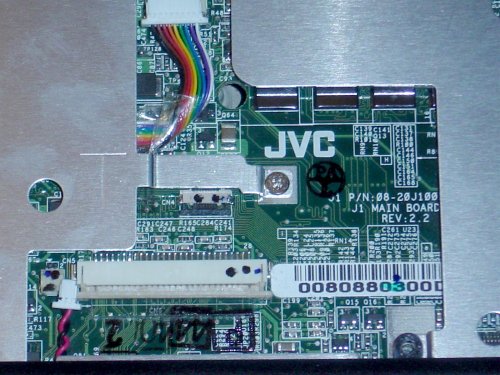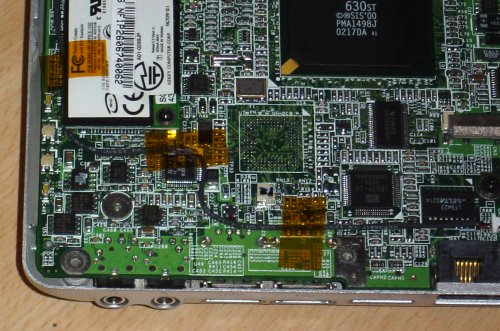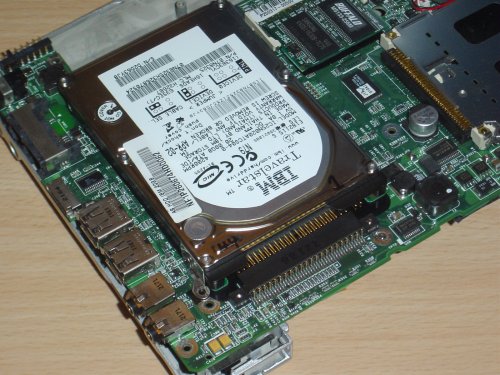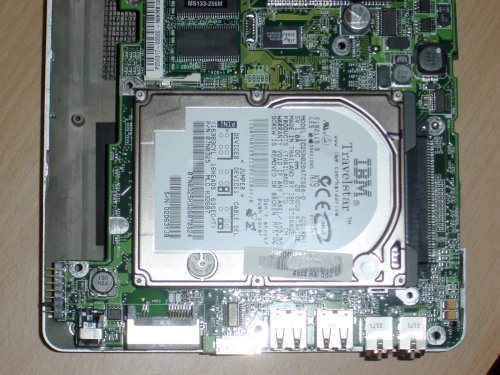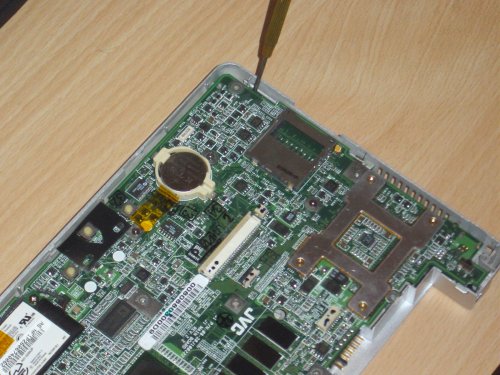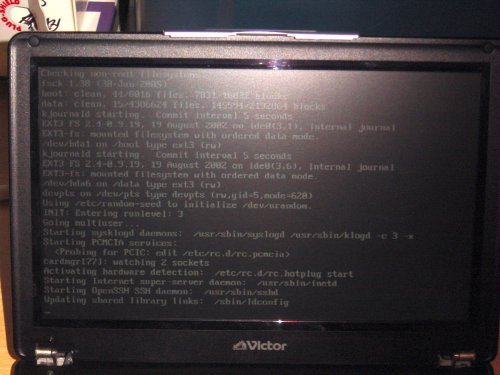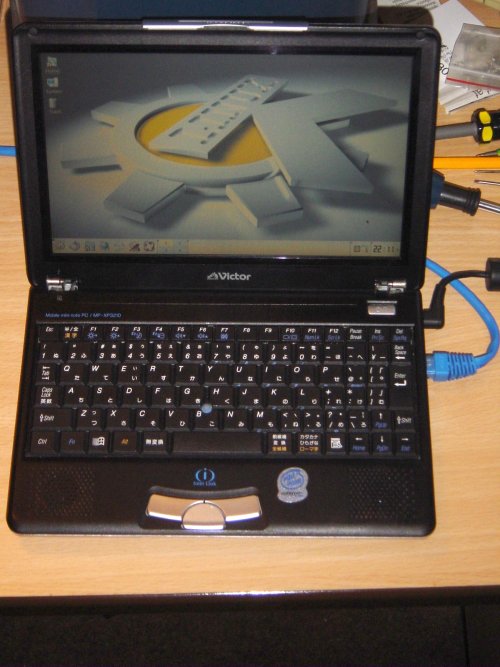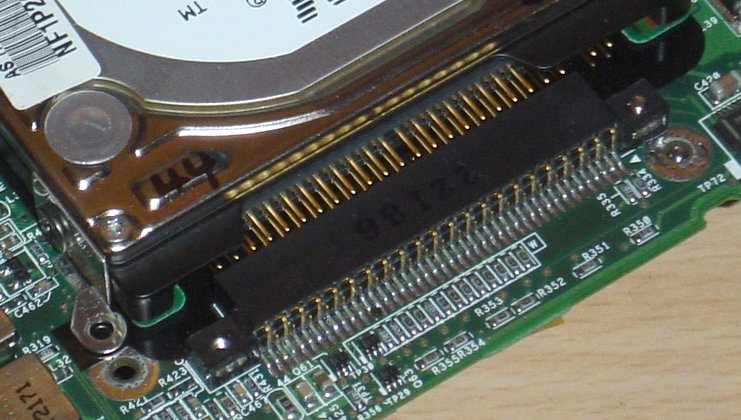 JVC InterLink xp-3210.
JVC InterLink xp-3210.
At last! A laptop that really is a laptop not a semi portable desktop. Last year in Japan, I bought a JVC XP3210 laptop second hand at a rather good price
(
CompMart in Hamamatsu or near
this map link). It came with "windows xp amateur",
a really bad version of "xp professional" if that's possible. Upon return to UK, the top priority for this was to get Linux running and ditch windows.
Some hunting on Google revealed some good links, I have listed the ones I used below. Unfortunately I had problems with the install, hence this guide.
I should make clear that this install guide is neither for the Linux newcomer, nor the hamfisted enthusiast.
If you break your 3210, you own all the pieces and they could be difficult to put back together. Proceed at your own risk!
The XP3210 is really useful because of its small size (opened out flat it is the size of A4 paper), this is an advantage travelling,
but requires good eyesight and nimble fingers as the screen is 100 dpi (not the usual 72dpi) and the keyboard is just that bit smaller than usual
to help create lots of typos until adapted to.
The small size however restricts the interface options available. A cdrom is lacking as is a floppy drive, simply there isn't enough space in the box to fit them.
JVC's solution is to use an external cdrom with pcmcia interface and a USB floppy disk drive. Neither of these were supplied with my 3210.
See link [1] for info about getting access to the BIOS settings to configure boot up options (You can see the BIOS by
holding down Esc while booting and then pressing Alt-F2.).
My first attempt was to do a floppy boot with a USB floppy borrowed from a friend (Thanks Elly!) to get a kernel and net drivers and then to do a net boot.
The USB floppy does allow booting, however the BIOS seems to retain control over it so I could boot off a boot disk, but when I was prompted to put the root disk in,
the disk was not recognised by the kernel. After several different disks, I decided this was not viable.
Maybe I could have tried creating an optimised boot/root disk with net drivers all in under 1.44Mb.
Jochen Topf's Debian install method seemed good, I wanted to use Slackware but the procedure should be similar. Even though I did not want to run windows at all,
I ended up having to create partitions for Linux and to keep the dos one to allow loadlin to run. This method did not want to run correctly also, part of the way
through the boot after running loadlin, I managed to get a consistant kernel panic. Not sure why, I should have made more notes at the time.
After some more experiments, I managed to kill the boot sector on the windows partition, this left me with a dead laptop, and unable to boot off anything to recover the situation.
This is the origin of my warning above. After several weeks of frustration examining the laptop, I decided that the best way to get this fixed was to work
out how to disassemble it, to remove the hard disk and configure it on another computer and then put it all back together.
If it booted at this point, I could solve any configuration/driver problems to get it all working. The rest of the article focuses on how to do this.
This is a job for the nimble fingered!
Later OS install attempts
Although the install of Slackware with the disk removed and placed into a donor system worked well, for the next rebuild, I did not want to take the
xp3210 apart. The solution was to build a network boot server and boot the xp3210 over the network from tftp and then perform an http install. This is
my preferred method for building all systems now. My setup gives me a choice of os to install from a menu stored in /tftpboot/pxelinux.cfg/default.
The config of this setup is beyond the scope of this article, but is documented elsewhere.
 JVC InterLink xp-3210.
JVC InterLink xp-3210. JVC InterLink xp-3210.
JVC InterLink xp-3210.